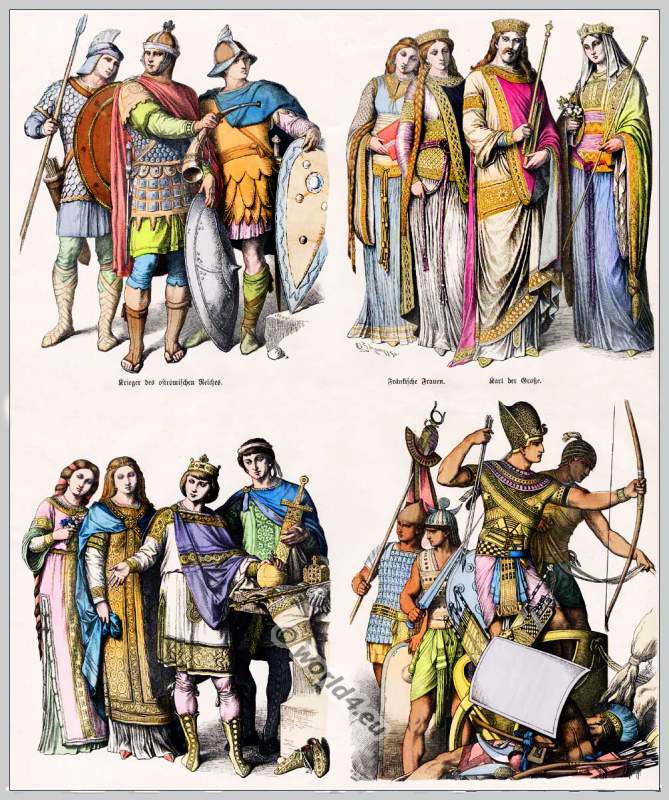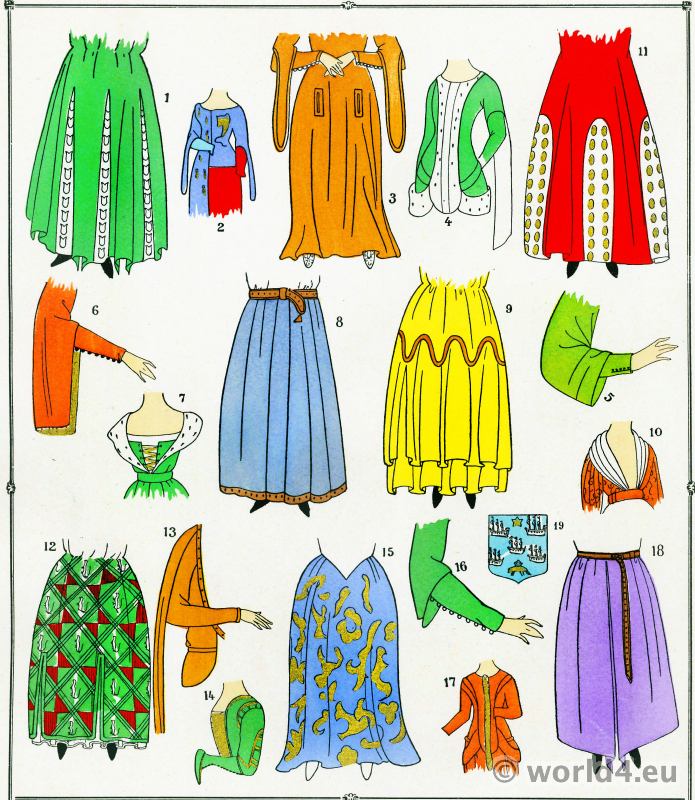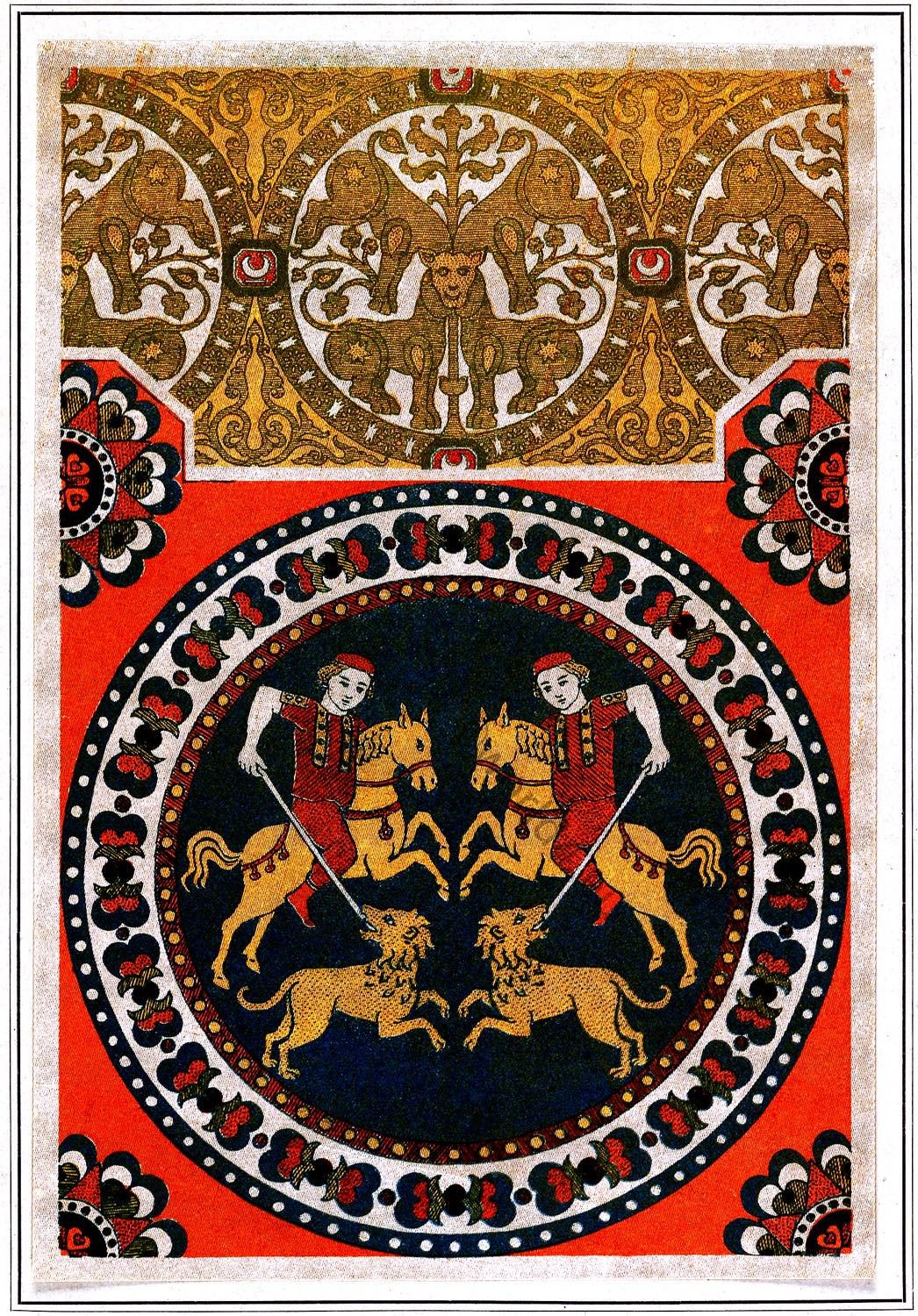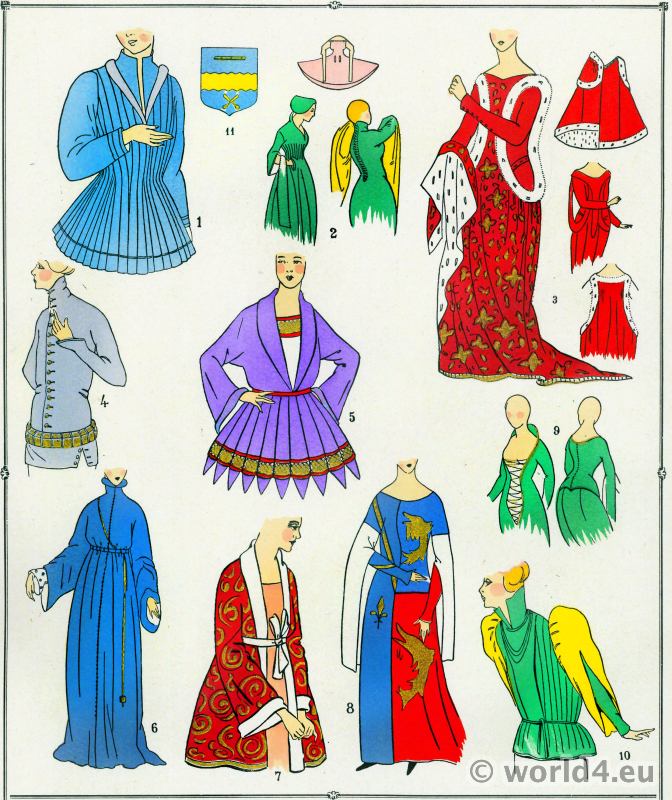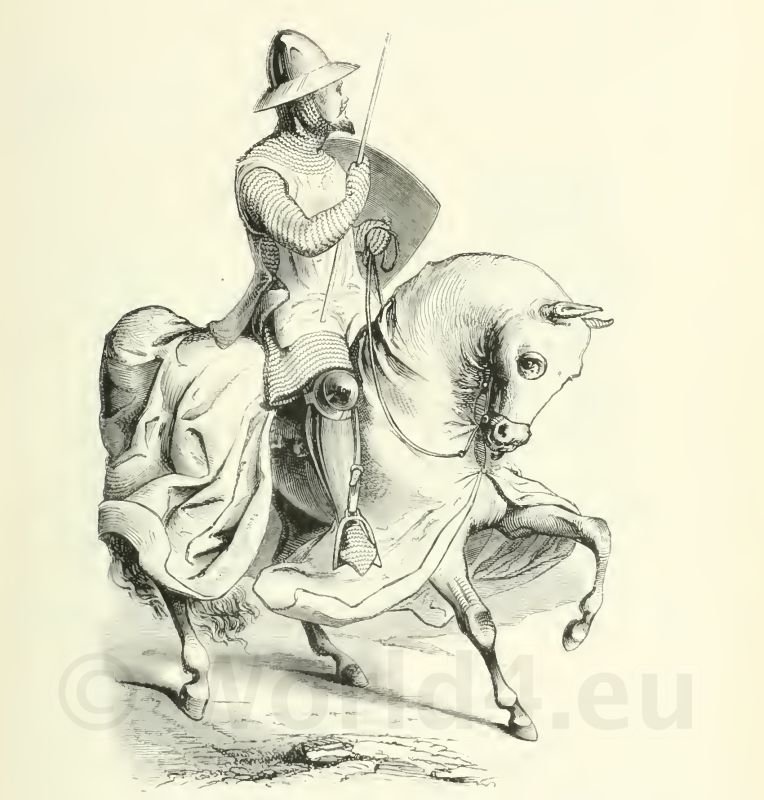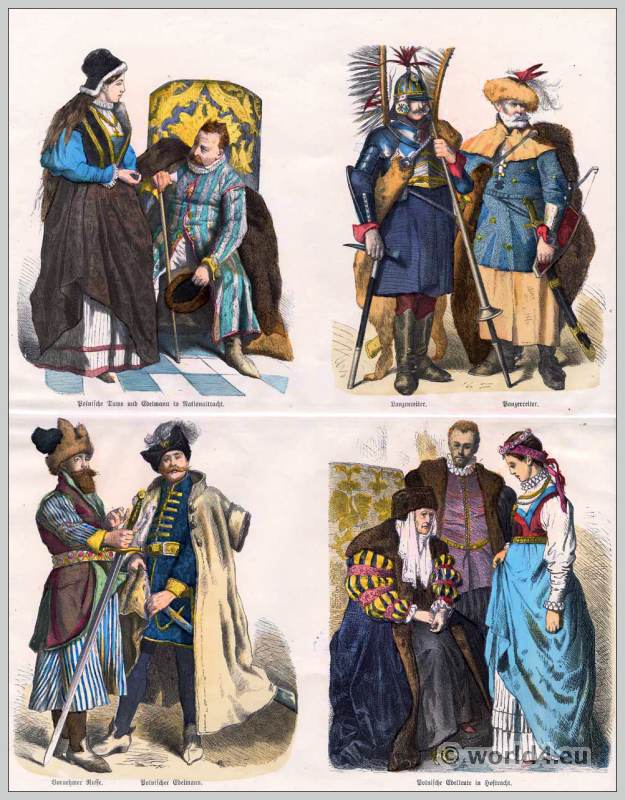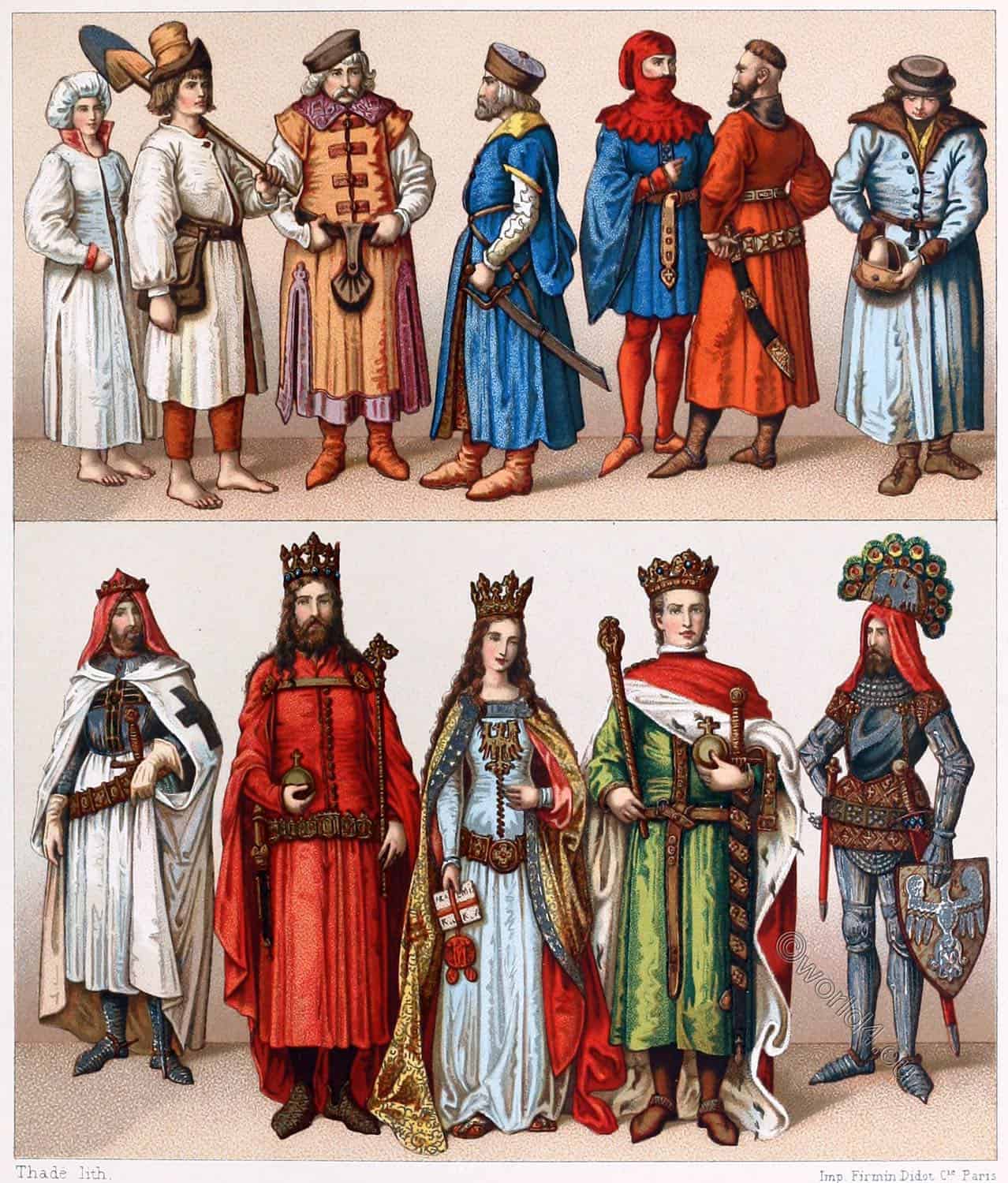
1, 2, 3, 4, 5, 6, 7,
8, 9, 10, 11, 12,
POLAND. XIV. AND XV. CENTURY
TYPICAL AND HISTORICAL FIGURES.
Peasant and peasant’s wife, noblemen, citizens, Grand Master of the Teutonic Order, Casimir the Great, Hedwig of Anjou, Wladislaw Jagello, Wladislaw, Duke of Opole.
Nos. 1 and 2 – Peasant and peasant woman from the surroundings of Krakow in working clothes. After a painting from the 14th century in Krakow Cathedral.
No. 3 – Nobleman of the second half of the 14th century. According to a Czech chronicle in Pulkawa.
No. 4 – Nobleman of the same time. After a painting in the cathedral of Krakow.
No. 5 and 6 – Citizen and nobleman. 1333-1434. After a painting in the cathedral of Krakow.
No. 7 – Peasant from the Masovian Palatinate.
No. 8 – Grand Master of the German Order.
No. 9 – Casimir the Great, King of Poland died 1370, the last of the Piast dynasty. After the statue of his tomb in Krakow Cathedral.
No. 10 – Hedwig of Anjou, Queen of Poland 1384, wife of Wladislaw Jagello, Grand Duke of Lithuania. After an impression of a seal.
No. 11 – Wladislaw Jagello, Grand Duke of Lithuania and King of Poland, died 1434, after his tomb statue in Krakow Cathedral.
No. 12 – Wladislaw, Duke of Opole, Palatine of Hungary, from the dynasty of the Plasts. After a seal impression from the year 1378. Princely armour of occidental origin.
According to Matejko, Ubiory Polsce (Polish Costumes) 1200-1795. Krakow 1860 (2nd ed. 1875).
Source: History of Costume in Chronological Development by Auguste Racinet. Edited by Adolf Rosenberg. Berlin 1888.
Continuing
Discover more from World4 Costume Culture History
Subscribe to get the latest posts sent to your email.

